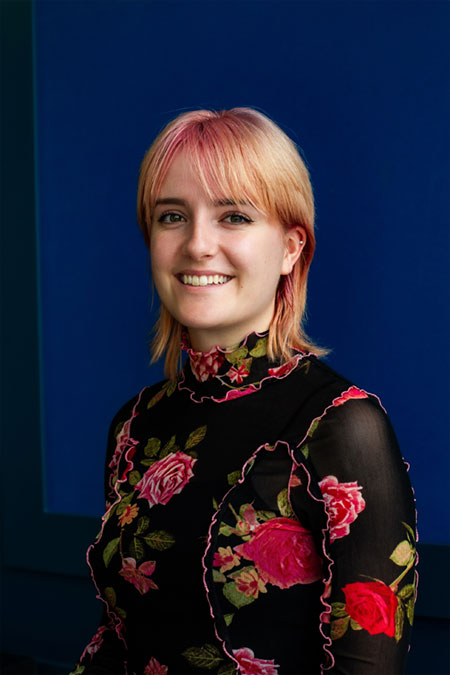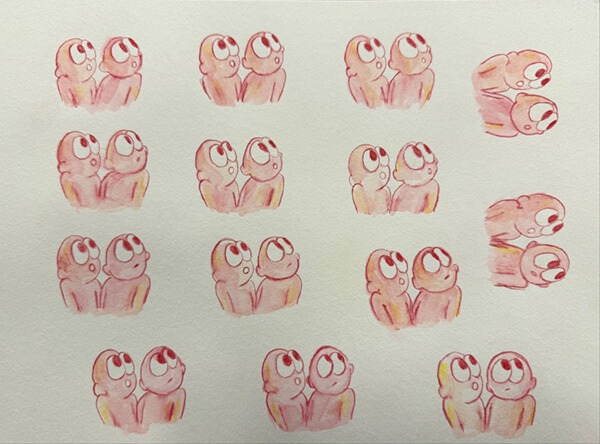Not Enough Womb for the Two of Us
What is the film about?
Produced as part of the 14th edition of Hothouse.
Cameron Kletke depicts an in utero skirmish between twins with spacious hand-drawn
animation, employing watercolours and pastel to plunge us into an intimate watery
universe where the umbilical cord becomes a prop in a comic battle of wills. Those little
elbows can be sharp.
What influenced it?

Cameron Kletke (Photo: Fannie-Laurence Dubé-Dupuis, courtesy of NFB)
I’ve always been inspired by Len Lye and Norman McLaren’s expressive audiovisual work. I
brought elements of their style into this film, for example by timing some of the action to the music. The water-colour and frame-by-frame animation techniques I used have been compared to Chris Hinton’s work, especially the camera motion and comedic elements in the film. I once interviewed artist and animator Amy Kravitz for a school project and since then have been inspired by her artistic process, which is non-linear and based on experimentation. My graduation film and this film followed a similar process—which was experimenting first and finalizing the storyboard last!
A little background information...
When brainstorming this year’s Hothouse theme, ‘Small Things Considered,’ I remembered how small my twin sister and I were, as well as the stories my mom told us about how ‘active’ we were in her belly. I’ve heard countless tales about how my sister and I ‘must have been fighting since the womb,’ and I created this film to dramatize this, using comedy and experimental methods.

Image: NFB
I also vaguely remember watching a documentary about how twins interact in the womb and how that can determine their personalities as they age, which is fascinating, but I was more intrigued with the concept of playing with that idea in a funny and visually captivating way, using childlike materials like crayons and paint. This, combined with how my sister and I used to (and still) fight, is the main inspiration for the film.
How was the film made?
The film was made with water-colour paint, pastel and water-colour pencil crayons. Playing with the materials and staying loose really allowed the animation to remain playful and expressive; it was a very rewarding process and included a lot of experimentation with different paper and materials.


